Light on new cars, Detroit show features trucks
By John Gilbert
DETROIT, Michigan
Call it “Auto Show Light,” but the North American International Auto Show, formerly known simply as the Detroit Auto Show, seems to have gone on a diet, as the latest example of how the automotive world is changing. Swamped by the consumer tide of sports-utility vehicles rising above and beyond mere cars, much in the way the nation’s most prestigious auto show has added words in hopes of adding prestige to its name.
While spectacular new cars were fewer, there certainly were still some compelling introductions during the annual press previews on Monday and Tuesday, January 15-16, with the public show following through the following two weekends. But trucks had the upper hand.
Ram rolled out an impressive new 1500 pickup truck, with the massive, macho facade replaced by a far more refined grille and completely redone interior, with a giant vertical navigation/information screen about the size of a full-size iPad.
The new rounded-off look is a departure, and it was interesting that the new Ram won “Best in Show” from the respected auto website cars.com, and perhaps it was verification of how few new cars there were, since the Los Angeles Show in November, that pickups won several awards.
Ford offered a hybrid version of its new F150 pickup and made big news affirming the much-rumored return of the midsize Ranger pickup, which not only was a highlight of the show, but was a co-dominating model alongside a couple of new Mustang versions.
Honda’s Acura luxury division called it a concept, but the new generation of the RDX compact SUV made a strong impression, as trucks and trucklings dominated. Also, there were a number of concept vehicles — including one each from Nissan and its upscale Infiniti brand — and Toyota’s Lexus also showed a concept sporty SUV.
But marketing ideas and PR ploys still fail to grasp the simple fact that the cars are still the stars when it comes to such gala events, as long as you include trucks and SUVs in the catch-all term “cars.”
As if the NAIAS doesn’t have enough worry with the Los Angeles, Chicago and New York shows crowding its popularity, the manufacturers are now trying to outflank the NAIAS itself by introducing vehicles in the two days before the Monday opening day of the annual media presentations. That added to the effect of curtailing the aura of prestigious presentations at the press preview days, which were themselves reduced from two busy days to one shortened day and a second with only one introduction — the new Jeep Cherokee, which was to be introduced for media drives a week later.
Chevrolet had a major introduction on Saturday night, before the earliest out of town media started arriving Sunday. Ford and Volkswagen held events Sunday night, among others. Generally, the show gets started with the early Monday morning presentation of the North American International Car, Truck and Utility of the Year awards.
The resulting competition for media exposure and the expenses involved to the manufacturers conspired to make as big news of the manufacturers who weren’t at the show as big as the news of who was. Porsche was not present, for example, nor was Mazda, whose absence is another sign of the times, because it just was named by the EPA for having the highest corporate over-all fuel economy for the fifth straight year. Jaguar and Land Rover were also absent, preventing many in the media from their first examination of the just-introduced Velar SUV, as was Mitsubishi, which is just starting to gain traction in its rebirth.
Volvo did have a display, but no formal presentation. The Swedish company virtually had to be present, since its new midsize XC60 SUV won the vote of 60 unattached media members as Utility of the Year. The Volvo followed the footsteps of its larger sibling, the XC90, which won as Truck or Utility of the Year two years ago. This year, the Alfa Romeo Stelvio and the Honda Odyssey were other finalists, as the jury decided to list the Odyssey with the utility vehicles, while minivans traditionally had been judged against cars, as verified by the cars.com award to the Chrysler Pacifica as Family Car of the Year.
The Honda Accord won Car of the Year, mainly because it was totally redesigned and adds two new engines as the nation’s top-selling car to individual buyers. The Toyota Camry, the largest seller if you include fleet sales, and the upstart Kia Stinger performance sedan were other finalists.
The Truck of the Year category was truly muddled, as the only three ruled eligible were the Chevrolet midsize Colorado ZR-2 pickup, with only the addition of off-road front protective structure and underpinnings to stand as “new,” while the heavy-duty utility giants Ford Expedition and Lincoln Navigator were the only other candidates. Both are body on frame and have heavy towing capabilities, which somehow allowed the jury to shift them from their obvious position among Utilities to Trucks, where the Navigator emerged as Truck of the Year.
Marc Thelan, jury chairman and a columnist for the Detroit Free Press, felt compelled to accompany the naming of the awards with his explanation in a Monday column of how and why the Navigator was a truck and not a utility, where it always has competed against such large SUVs as the Chevrolet Suburban and Tahoe, and GMC Denali.
Ford showed the concept F150 Hybrid as a 2020 concept, and it also presented a Mustang Mach 1 hybrid as a concept. The star of Ford’s Sunday pre-press-days show was the introduction of a 2019 Mustang called the Bullitt, after the acclaimed action movie Bullitt that displayed some spectacular driving up and down the hillsides of San Francisco with the late Steve McQueen driving. Ford brought in his granddaughter, Molly, with a video of her doing similar driving in the new Bullitt, then introduced her in person along with the privately-owned original movie Mustang.
Volkswagen, which was reported along with the obligatory explanation of its diesel “scandal” for fitting a device that shut off the emission elements when not being tested, displayed why it is resurgent in world sales with the new Jetta. True, the Detroit Free Press and Detroit News are virtual hostages of the domestic manufacturers, but while they ridiculed VW’s problem, they completely overlooked naming the other manufacturers, such as General Motors and Ford, which have been accused and sued for their diesel truck engines also being fitted with the illegal plumbing to evade EPA test scrutiny, and their numbers dwarf the actual number of Volkswagen vehicles with the now-eliminated outlaw diesels.
VW has rebounded with the addition of the Atlas three-row SUV and the extension of the new Tiguan as a longer SUV. The news of the new Jetta Sunday night included the first display of the Passat GT performance sedan as a U.S. aimed and built vehicle, and the Jetta is the newest rendition of VW’s most popular U.S. sedan. Cars.com gave awards to Jetta’s siblings, naming the new full-size Atlas as Best of 2018, and the GTI version of the Golf as Most Fun to Drive for 2018.
The Jetta display was more than just the extremely fluid and attractive body shape, with a coupe-like silhouette, built on the acclaimed MBQ platform, and the impressive interior with its encapsulating bucket seats. Under the hood, the only available engine is VW’s outstanding new 1.4-liter turbo 4-cylinder gasoline engine. VW’s mainstay 4-cylinders have been the 2.0 and its 1.8-liter derivative, but the 1.4 is a new engine from an entire new family of 4-cylinders, with less horsepower but virtually the same torque as the larger 4s. The torque figures give it the same feeling of thrust, and the 1.4 can top 40 miles per gallon.
The Lexus LF-1 Limitless is a compact crossover that borrows heavily from the sleek and swoopy array of Lexus sports coupes, but there is no telling if or when it will be built.
Acura, meanwhile, calls its new RDX a concept vehicle, but that is Honda’s style, to call new vehicles concepts while leading up to actual production, and the new third-generation prototype RDX appears ready for production, with a new and dedicated small turbocharged V6 engine as an option to a 2.0-liter turbo 4.
Kia executives stressed the design cues from the Stinger, its first Car of the Year finalist, in the design of the new compact Forte, which is longer and wider with its windshield positioned 5 inches rearward from the current car, and the emphasis on improving ride and handling starts with a chassis taht is 54 percent made of high-strength steel. It is powered by a second generation 2.0-liter 4-cylilnder with 147 horsepower and 132 foot-pounds of torque — enough to propel the comparative lightweight compact and also deliver 35-mpg efficiency.
Kia’s production partner, Hyundai, talked about the introduction 10 years ago of the oddball Veloster sporty coupe, and the context was to introduce the second-generation version of the car as a 2019. It retains the three-door design, with a large driver-side door, narrower right side front door, and smaller rear door carved into the right rear for easy access to the rear seat. It still has the flashy center exhaust tube at the rear, but all the quirky corners and angles have been smoothed out under the new skin. It also has a 2.0-liter Atkinson cycle 4-cylinder engine for base power, with an optional 1.6-liter turbo, running with a stick shift or a 7-speed house-built dual-clutch automatic.
With South Korea having shown its stuff, we were taken back to Japan for Nissan’s showing of its Infiniti based 4-cylinder turbo concept compact SUV, where the big news is a revolutionary — you should pardon the expression — variable compression turbo engine. The engine cylinders run their course, but instead of the high-tech trick of varying the valve timing with sophisticated overhead camshafts, Nissan’s new engine actually varies the compression ration for different load requirements. We will look forward to the production of any Nissan or Infiniti vehicles with the new technique, and it will start in the Infiniti QX50 crossover.
Nissan offered a concept SUV called the Xmotion, which could influence the direction its popular Rogue will take in design, while Infiniti’s concept was a long and sleek sporty 4-door sedan called the Q Inspiraton, which can capitalize on the company’s outstanding turbo 2.0-liter 4, or go with the VC-Turbo — its revolutionary, you should pardon the expression, variable compression technology.
With Lexus taking the outer-limits concept approach, Toyota was left simplifying things, introducing the new 2019 Avalon luxury sedan. I thought the current Avalon was the best looking sedan Toyota had ever built, for either itself or Lexus. The new one? Well, we can give it time. I found some of the contour lines seemed to be aimed at being different just to prove it’s a new model, and the way one seam dipped down toward the wheel-well seemed to avoid the harmony of the current car.
While that Avalon introduction ended the normal schedule of traditional first-press-day presentations, Chinese manufacturer, GAC Motors, showed two vehicles and says it will establish research and development centers in Detroit and Los Angeles, intending to enter the U.S. market with a GA4 sedan and at least one SUV to start with. FCA, Fiat Chrysler Automobiles, has partnered with GAC to sell Fiats and Jeeps in China, and GAC officials said they would like to start out in the U.S. with a similar partnership with FCA.
Tuesday’s lone car presentation was the Jeep Cherokee, its mid-range vehicle between the Grand Cherokee and the smaller Compass and Rendezvous. The Cherokee has been a hit with its squinty headlights and a departure from traditional Jeep styling. The new one gives up the squint and takes a more conventional approach, similar to the new 2018 Compass. It will have three engine choices, with a base 2.4-liter 4, a 3.2-liter V6, and a new 2.0-liter turbo.


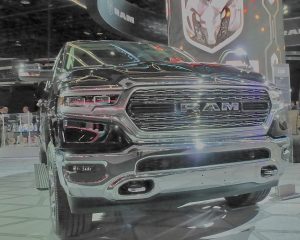
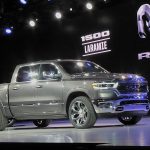
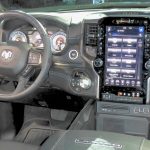
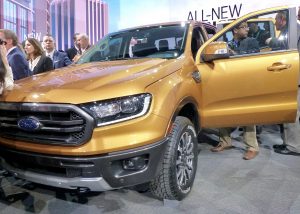

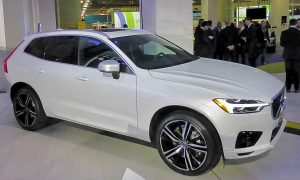
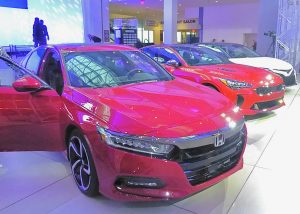
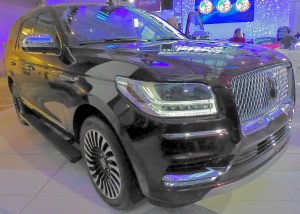
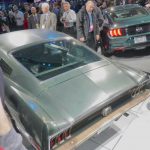

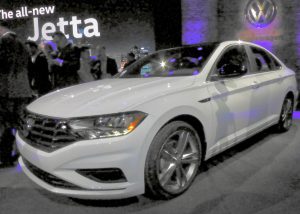
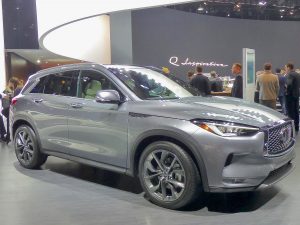
 John Gilbert is a lifetime Minnesotan and career journalist, specializing in cars and sports during and since spending 30 years at the Minneapolis Tribune, now the Star Tribune. More recently, he has continued translating the high-tech world of autos and sharing his passionate insights as a freelance writer/photographer/broadcaster. A member of the prestigious North American Car and Truck of the Year jury since 1993. John can be heard Monday-Friday from 9-11am on 610 KDAL(www.kdal610.com) on the "John Gilbert Show," and writes a column in the Duluth Reader.
John Gilbert is a lifetime Minnesotan and career journalist, specializing in cars and sports during and since spending 30 years at the Minneapolis Tribune, now the Star Tribune. More recently, he has continued translating the high-tech world of autos and sharing his passionate insights as a freelance writer/photographer/broadcaster. A member of the prestigious North American Car and Truck of the Year jury since 1993. John can be heard Monday-Friday from 9-11am on 610 KDAL(www.kdal610.com) on the "John Gilbert Show," and writes a column in the Duluth Reader.